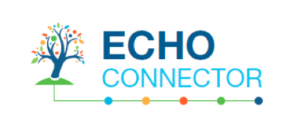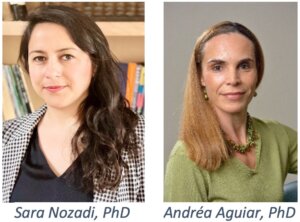FOR IMMEDIATE RELEASE
Researchers identify less biased questions that could reliably capture childhood behavior problems

Scores from a commonly used measure of behavior problems in young children may be skewed depending on the primary language, education, and sex of the caregiver who fills out the survey, as well as the child’s age and race, according to new research from the NIH’s Environmental influences on Child Health Outcomes (ECHO) Program.
ECHO Cohort researchers analyzed data from caregivers who filled out the widely used Child Behavior Checklist (CBCL) 1.5–5 on behalf of 9,087 young children ages 18 to 71 months from 26 ECHO research sites across the United States. The caregiver-reported survey evaluates a range of behavior problems in young children.
"Understanding children's behavior can help us identify potential issues in their development and mental health down the road,” said Shuting Zheng, PhD of the University of California, San Francisco. “To do this effectively, we need reliable ways to measure their behavior equivalently for children from diverse backgrounds."
The study found that how caregivers respond to the questions on the measure was biased the most by the language used to complete the survey, followed by factors such as the caregiver's education level and sex and the child's age and race. These biases persisted after accounting for mental health disparities between these groups. Researchers noted that some information could get lost in translation and people from different cultures could understand child behavior problems differently. The gender of the person answering the questions and their level of education also had an impact and researchers pointed to parents’ expectations about how children should develop as possible influences in how they answered the survey questions.
ECHO Cohort researchers were then able to identify some CBCL questions less affected by measurement biases introduced by sociodemographic factors but which still reliably captured childhood behavior problems. The subset of questions that showed little bias across survey-taker demographics still captures a wide range of behaviors across internalizing (e.g., emotionally reactive, withdrawn) and externalizing problems (aggressive behaviors and attention problems).
Going forward, ECHO Cohort researchers plan to apply these questions, evaluating their reliability in identifying children with clinically significant behavior problems.
“Finding questions with less measurement bias across socio-demographic groups helps researchers and clinicians measure behavior problems in different groups of kids of varying ages and family backgrounds more accurately,” Dr. Zheng said.
Dr. Zheng and Somer Bishop, PhD of the University of California, San Francisco, and Maxwell Mansolf, PhD of Northwestern University led this collaborative research that was published in the Journal of Child Psychology & Psychiatry Advances.
Zheng, S. et al. Measurement Bias in Caregiver-Report of Early Childhood Behavior Problems across Demographic Factors in an ECHO-wide Diverse Sample. Journal of Child Psychology & Psychiatry Advances. DOI: 10.1002/jcv2.12198.
###
About ECHO:
Launched in 2016, the Environmental influences on Child Health Outcomes (ECHO) Program is a research program in the Office of the Director at the NIH with the mission to enhance the health of children for generations to come. ECHO investigators study the effects of a broad range of early environmental influences on child health and development. For more information, visit echochildren.org.
About the NIH: NIH, the nation’s medical research agency, includes 27 Institutes and Centers and is a component of the U.S. Department of Health and Human Services. NIH is the primary federal agency conducting and supporting basic, clinical, and translational medical research, and is investigating the causes, treatments, and cures for both common and rare diseases. For more information, visit.
Media Contacts
For information or to request an interview, contact Rebekah Yeager, rebekah.yeager@nih.gov.
If you are not a member of the media, but have a general inquiry, please contact NIHKidsandEnvironment@od.nih.gov.
Connect With Us
 Check out the recent issues of our bi-monthly newsletter, the ECHO Connector, for program news and the latest research findings.
Check out the recent issues of our bi-monthly newsletter, the ECHO Connector, for program news and the latest research findings.
To receive the ECHO Connector through email, subscribe here.
Follow @ECHOChildHealth for the latest ECHO Program updates on Twitter.




 Collaborative ECHO research led by Sara Nozadi, PhD, of the University of New Mexico and Andréa Aguiar, PhD of the University of Illinois Urbana-Champaign suggests that eye-tracking technology can be used as a robust measure across diverse populations and settings to assess attention patterns linked to socially withdrawn behavior in preschool children. Their research, titled “Cross-Cultural Applicability of Eye-Tracking in Assessing Attention to Emotional Faces in Preschool-Aged Children” is published in the
Collaborative ECHO research led by Sara Nozadi, PhD, of the University of New Mexico and Andréa Aguiar, PhD of the University of Illinois Urbana-Champaign suggests that eye-tracking technology can be used as a robust measure across diverse populations and settings to assess attention patterns linked to socially withdrawn behavior in preschool children. Their research, titled “Cross-Cultural Applicability of Eye-Tracking in Assessing Attention to Emotional Faces in Preschool-Aged Children” is published in the 
